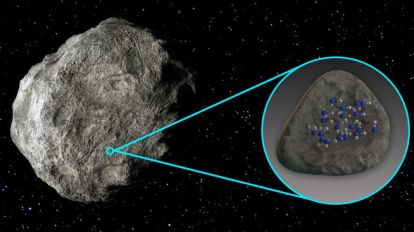Water appears to be plentiful in many locations outside of our planet and is necessary for life as we know it. For the first time, water molecules have been found by researchers on an asteroid’s surface.
As leftovers from the process of planetary formation, asteroids have different compositions depending on where in the solar nebula they formed. The distribution of water on asteroids is particularly interesting since it may provide insight into how water was brought to Earth, according to lead author Anicia Arredondo of a paper published in the Planetary Science Journal regarding the discovery.
According to the Southwest Research Institute, icy material combines to form asteroids much farther out from the Sun, whereas dry or silicate asteroids form closer to the Sun. The distribution of the solar nebula that gave rise to our solar system can be inferred from the locations of asteroids and compositions within it. Our quest for extraterrestrial life may be aided if we can comprehend the distribution of water in other star systems in addition to our own solar system.
Our research was founded on the discoveries made by the team that discovered molecular water on the moon’s sunny surface. “We detected a feature that is unambiguously attributed to molecular water on the asteroids Iris and Massalia.” Arredondo continued, “We believed we could use SOFIA to locate this spectral signature on other bodies.
The largest craters on the southern hemisphere of the Moon have previously been found to contain water by the now-retired Stratospheric Observatory for Infrared Astronomy (SOFIA). It could identify some hydrogen in the Moon and some asteroids, but not distinguish between water and its close chemical relative, hydroxyl.
The amount of water on the asteroid is comparable to that of the moon in the sun, according to the band strength of the spectral features. Arredondo clarified that water can also be adsorbed to silicate, bound to minerals, and trapped or dissolved in silicate impact glass on asteroids.



































